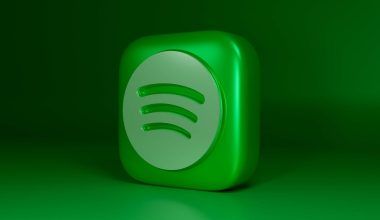YouTube has become one of the most popular platforms for content creators to share their passions, build a community, and, of course, earn money. But have you ever wondered exactly how YouTubers get paid? It might seem like magic, but there’s a clear system behind it. In this blog, we’ll break down the various ways YouTuber Get Paid and show you how you can do the same.
Whether you dream of becoming a YouTube star or just want to know how it all works, this guide is packed with insights to help you understand the world of YouTuber Get Paid.
How Do YouTubers Start Earning Money?
To start earning money on YouTube, creators must first join the YouTube Partner Program (YPP). This program allows YouTubers to make money through ads, memberships, and other features. However, not everyone can join right away. You need to meet a few key requirements:
- 1,000 Subscribers
- 4,000 Watch Hours in the past 12 months or 10 million views on Shorts
- An active AdSense account
Once you meet these criteria, you can apply for the program. After approval, YouTubers can start monetizing their videos.
Ads: The Most Common Way YouTuber Get Paid
When you watch a YouTube video, you’ve likely seen ads pop up before, during, or after the content. These ads are one of the primary ways YouTubers make money. Here’s how it works:
- Advertisers Pay YouTube
Brands pay YouTube to place ads on videos. - YouTube Pays Creators
Creators earn a share of this revenue, typically around 55%, while YouTube keeps the rest.
But it’s not as simple as uploading a video and cashing in. Factors like your niche, audience, and engagement levels determine how much you earn per ad. For example, a creator in the tech industry might earn more per ad than someone in a less lucrative niche.
What Is CPM and How Does It Affect Earnings?
CPM, or Cost Per Mille, refers to the amount advertisers pay per 1,000 views. CPM rates can vary based on factors like the viewer’s location and the video’s content. For instance, creators with an audience in the US often have higher CPM rates than those with audiences in less affluent regions.
Beyond Ads: Other Ways YouTubers Get Paid
While ads are a big part of YouTube earnings, they’re not the only way creators make money. In fact, relying solely on ads can be unpredictable. Here are some additional revenue streams YouTubers use:
1. Sponsorships and Brand Deals
Many YouTubers partner with brands to promote products or services. This can be incredibly lucrative, especially for creators with a large or highly engaged audience.
For example, a beauty YouTuber might work with a makeup brand to showcase their products. In return, the brand pays the creator a flat fee, a percentage of sales, or both.
2. Merchandise Sales
Selling merchandise is another popular way YouTubers get paid. Creators design and sell products like t-shirts, mugs, or even digital downloads to their audience. Platforms like Teespring and Shopify make it easy for YouTubers to set up their own online stores.
3. Channel Memberships and Patreon
For fans who want exclusive content, many YouTubers offer channel memberships or use platforms like Patreon. In exchange for a monthly fee, members get perks like behind-the-scenes videos, private Q&A sessions, or early access to content.
4. Affiliate Marketing
Affiliate marketing is when YouTubers earn a commission for driving sales to a brand’s website. Creators share unique links in their video descriptions, and when viewers make a purchase using that link, the YouTuber gets a cut.
For example, a tech YouTuber might link to a laptop on Amazon and earn a small percentage of each sale made through their link.
How Much Do YouTubers Actually Make?
The earnings of YouTubers can vary dramatically. Some creators earn a few hundred dollars a month, while others rake in millions each year. Here’s a breakdown of what influences their income:
- Niche: Some niches, like tech or finance, have higher CPM rates.
- Audience Size: More viewers mean more potential earnings.
- Engagement: A highly engaged audience is more valuable to advertisers.
For example, a small creator with 10,000 subscribers might earn $500–$1,000 monthly, while a creator with a million subscribers could earn $10,000 or more.
The Importance of Consistency
One thing all successful YouTubers have in common is consistency. Regularly uploading high-quality content helps build a loyal audience, which is key to increasing earnings. Remember, YouTube rewards creators who keep viewers engaged, so it’s important to focus on making videos people want to watch.
Tips for Aspiring YouTubers
If you’re thinking about starting a YouTube channel, here are a few tips to help you succeed:
- Find Your Niche: Choose a topic you’re passionate about.
- Invest in Quality: Use good equipment and editing software.
- Engage With Your Audience: Reply to comments and build a community.
- Be Patient: Growing a channel takes time and effort.
Final Thoughts
Becoming a successful YouTuber isn’t just about creating great content—it’s also about understanding how the platform works and finding multiple ways to monetize your efforts. From ads to brand deals, there are plenty of opportunities for creators to earn a living.
So, if you’ve ever wondered how YouTuber get paid, now you know! Whether you’re a casual viewer or an aspiring creator, the key to success is creativity, consistency, and a willingness to learn.
By following these tips, you can turn your passion into a career and join the growing community of YouTubers who get paid to do what they love.
For further reading, explore these related articles:
- Billboard Hot Trending Songs: The Heartbeat of Music Today
- Unlocking the Magic of Billboard Dance Club Songs: A Complete Guide
For additional resources on music marketing and distribution, visit DMT Records Pvt. Ltd..






